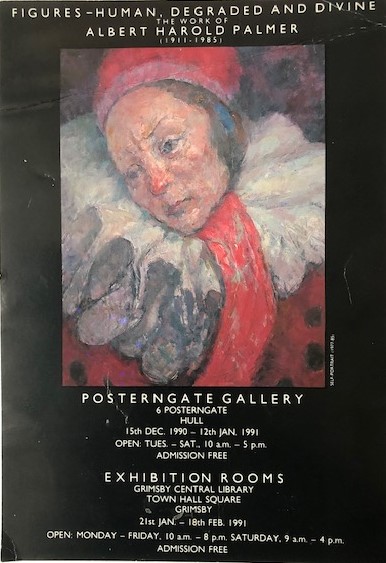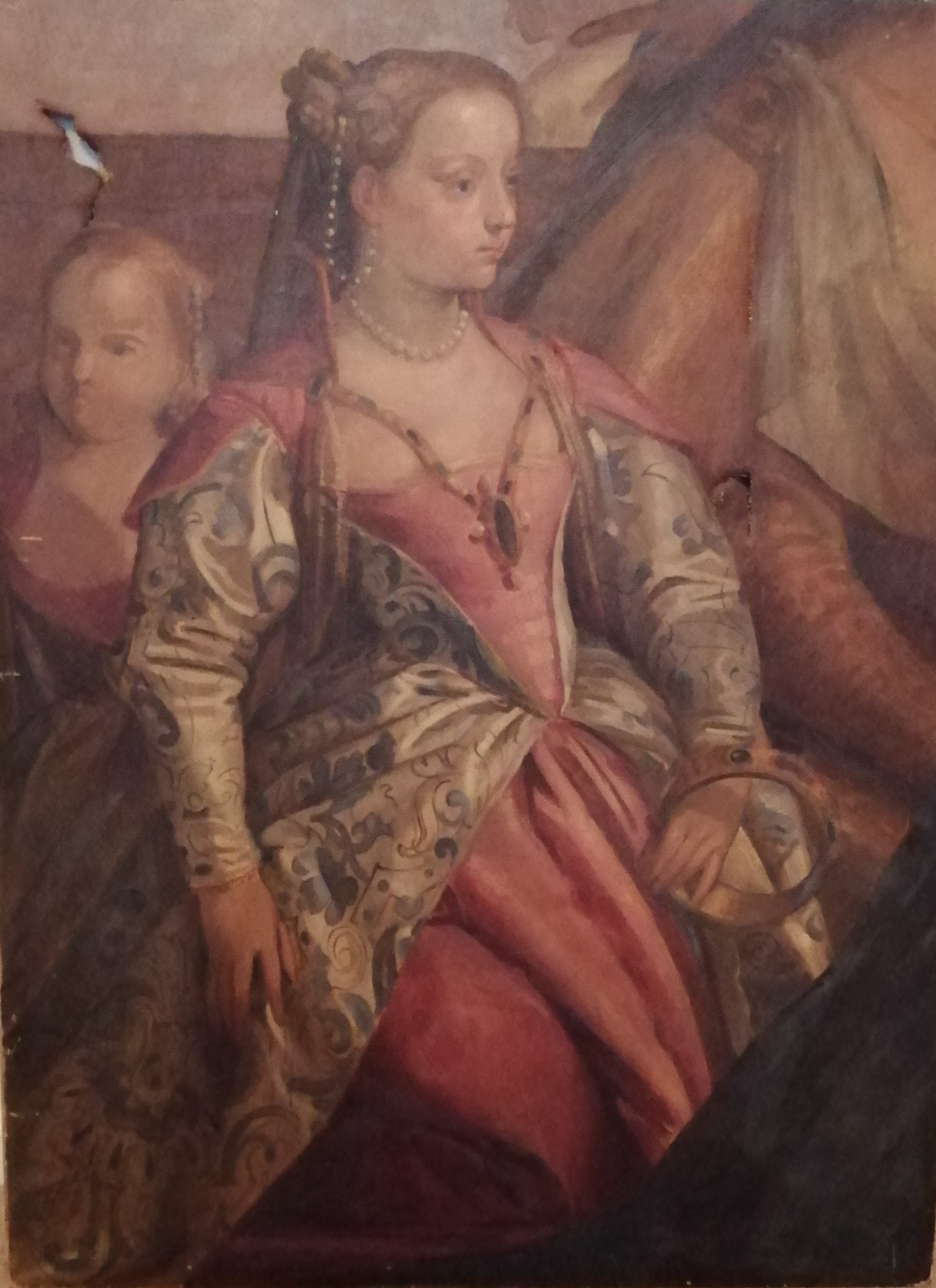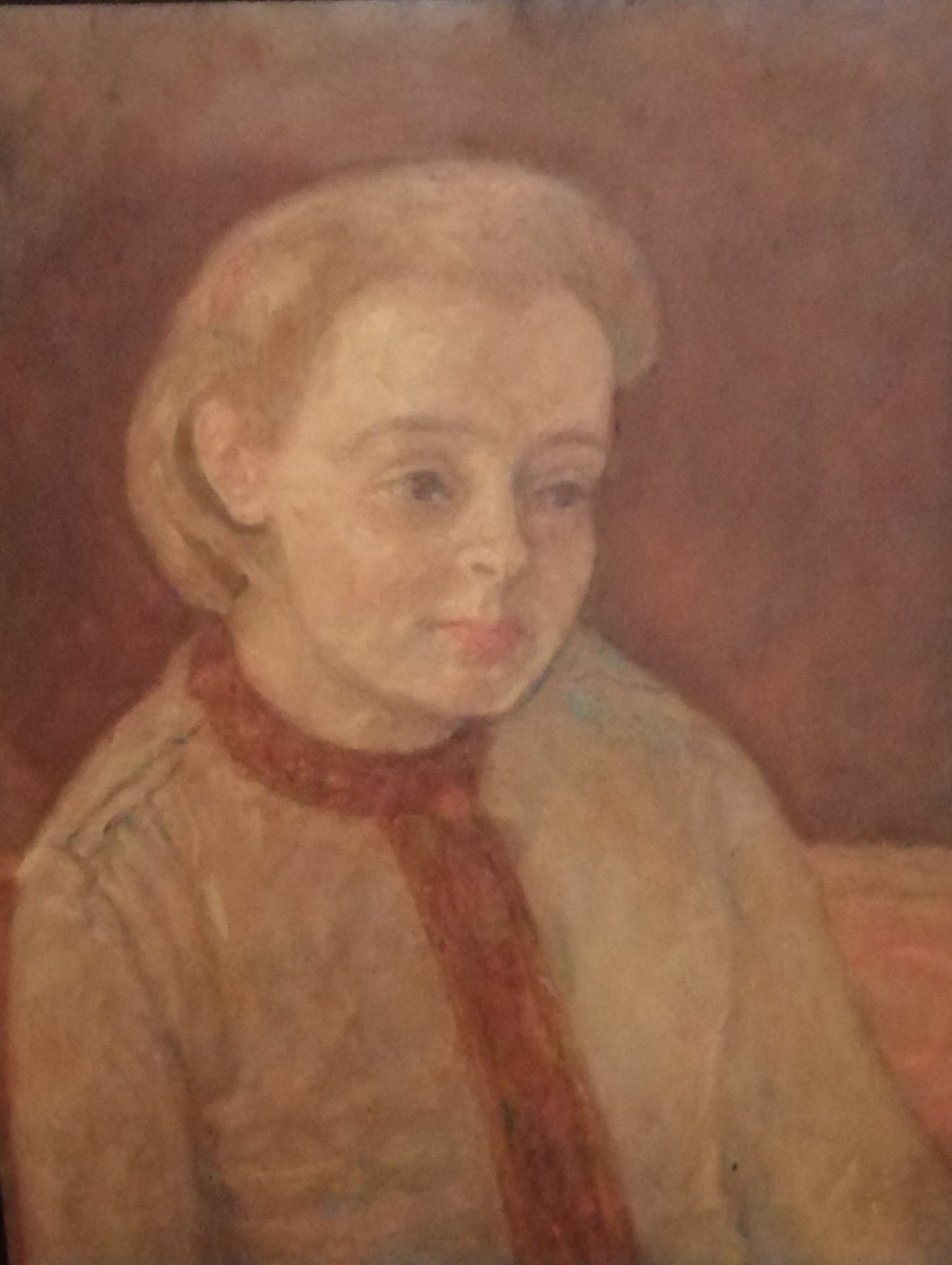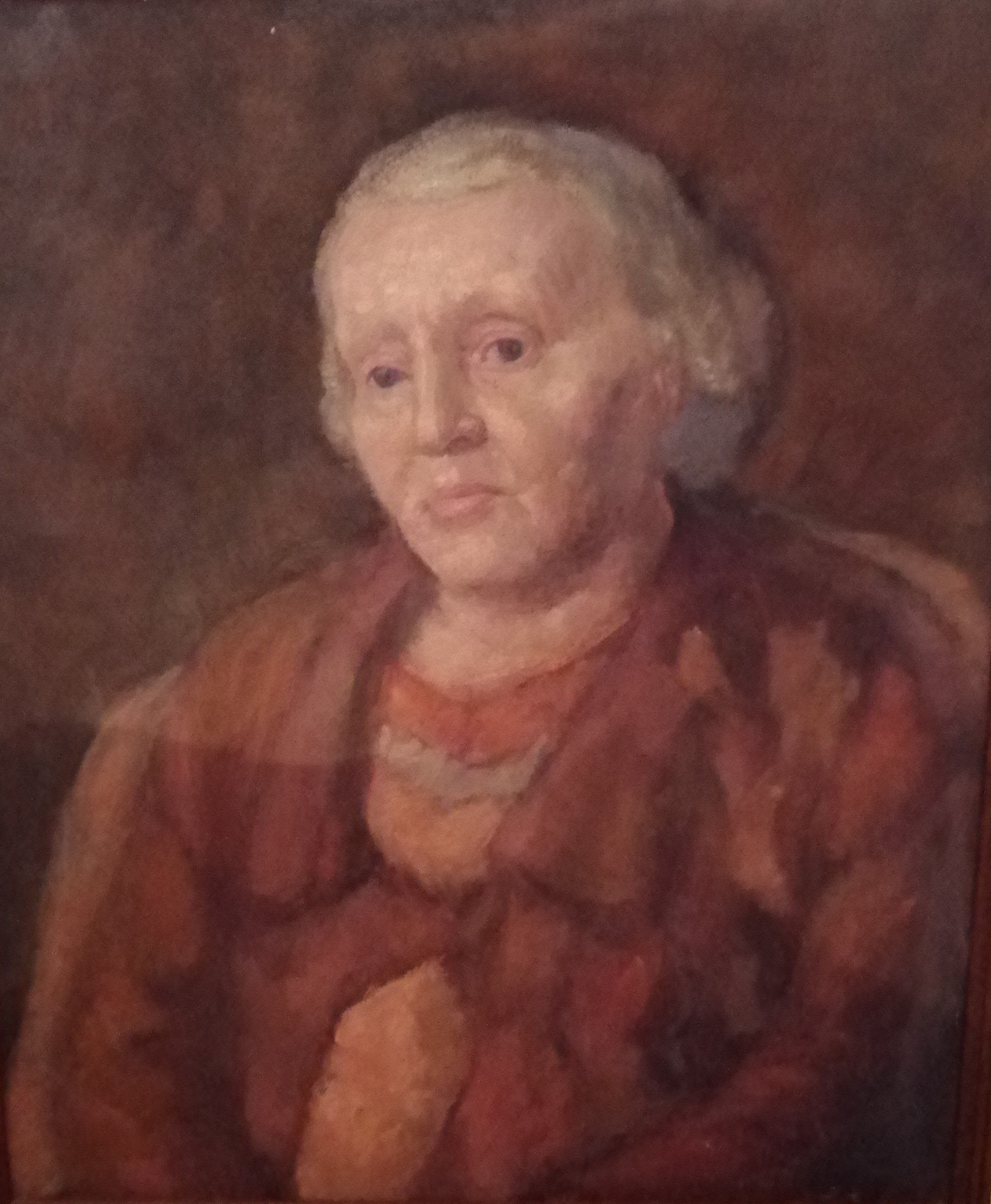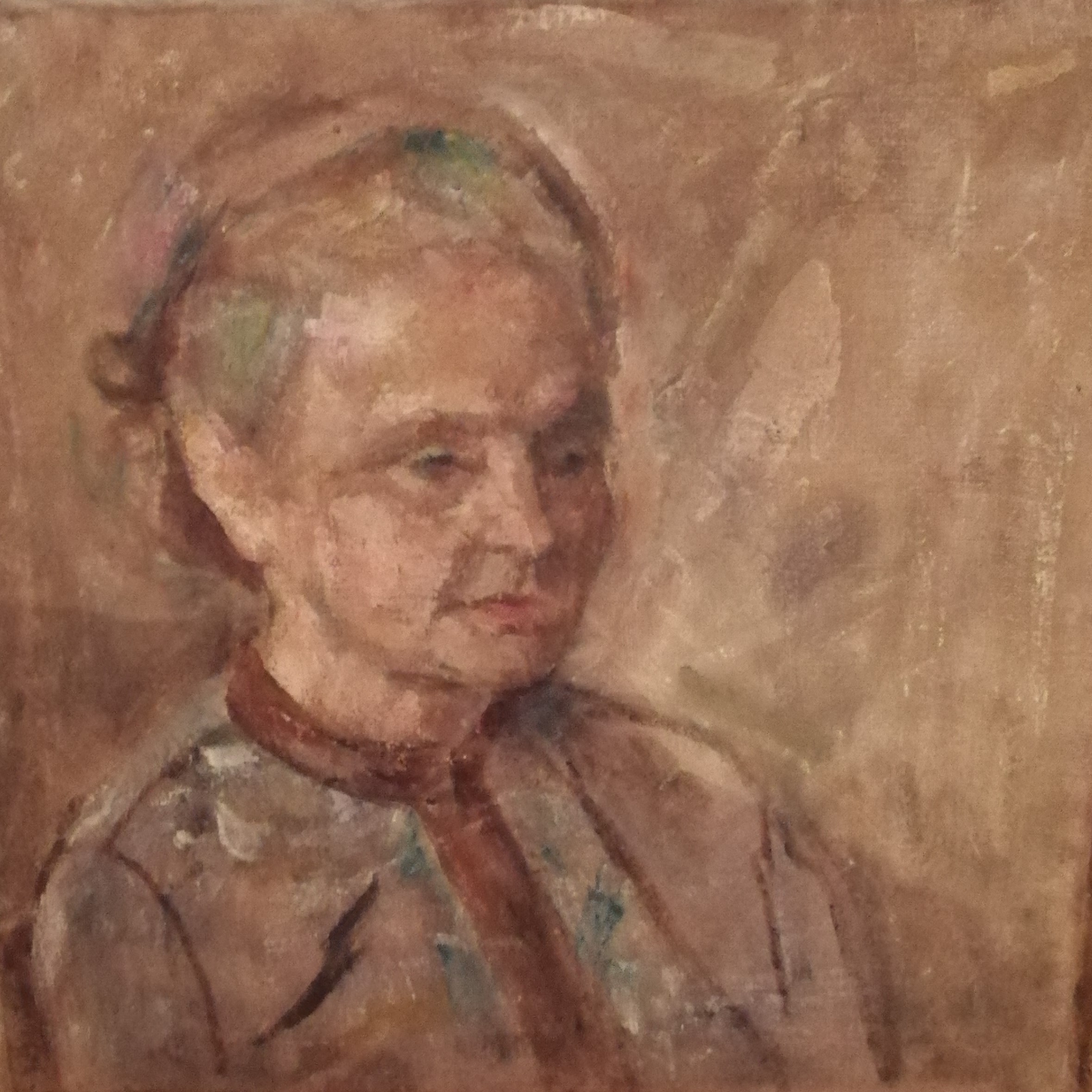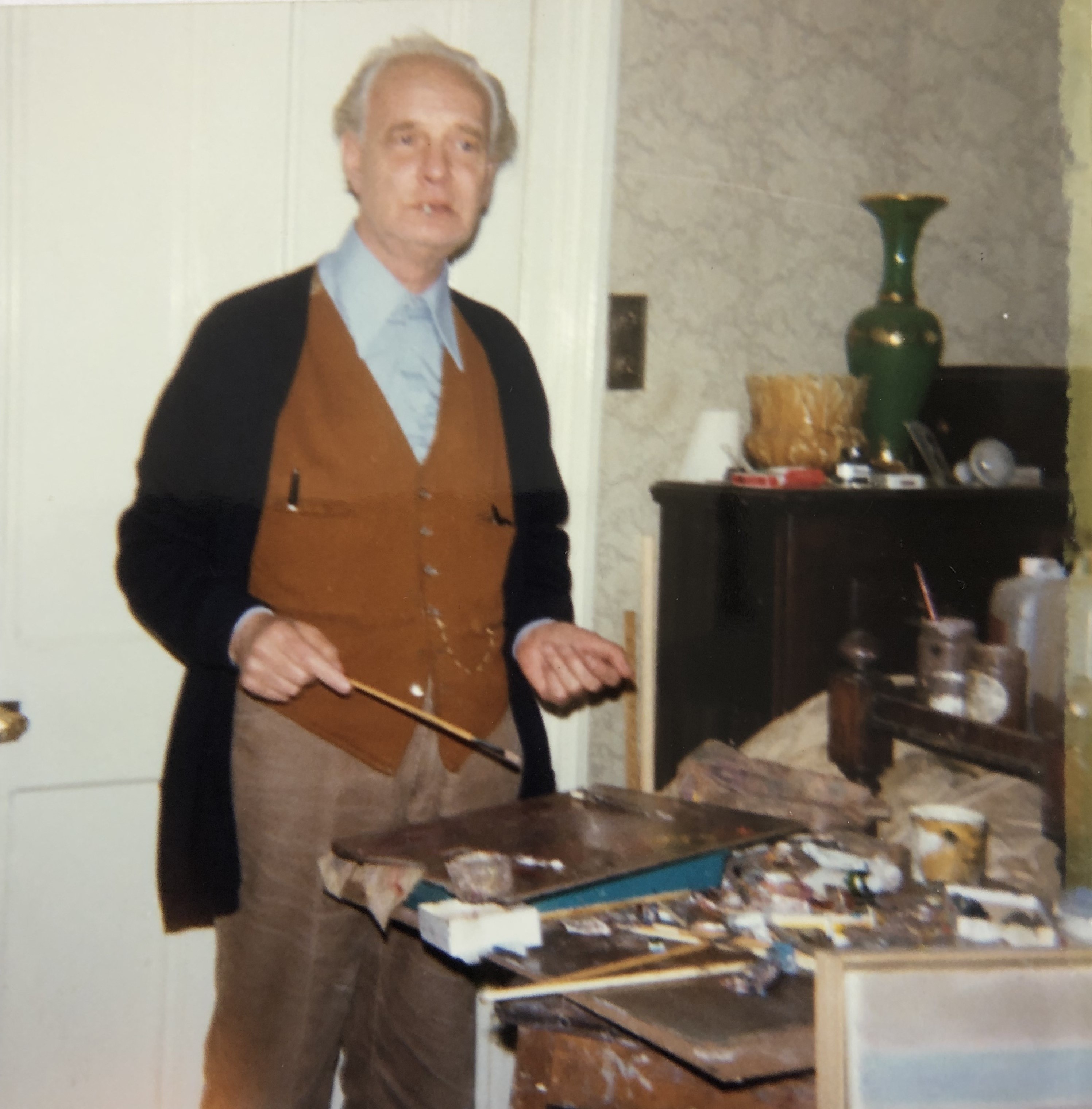
Albert Harold Palmer was an artist and teacher, born in Northamptonshire in May 1911
Art Education
Grimsby School of Art part time from 1923 -1927
full time from 1927-1929
Royal College of Art 1933-1936
Awarded a Diploma in the School of Painting - 1936
Awarded a Travel Scholarship
and a Gold Medal by the RCA - 1938
Professional Life
Worked in a Commercial Art Studio in London - 1929-1933
Copying Murals in the House of Commons for the
World Trade Exhibition in New York 1938-1939
During World War 11 worked in the Camouflage Corps 1939 - 1945
Sent to a tuberculosis sanatorium in Switzerland
by the Artist Benevolent Institution 1947-1949
Lectured in Painting, Maidstone Art School 1950-1954
Lectured in Painting, Gravesend Art School 1954
Acting Principal 1962
Head of Art and Craft
at Gravesend Adult Education Centre, 1962–77
Painted full-time at his own
Studio Gallery in Central London. 1977 - 1985
Exhibitions
Leysin Switzerland Exhibition of oil and watercolours 1949
Gravesend Oil Paintings 1973
Milton Chantry Gravesend Exhibition 1987
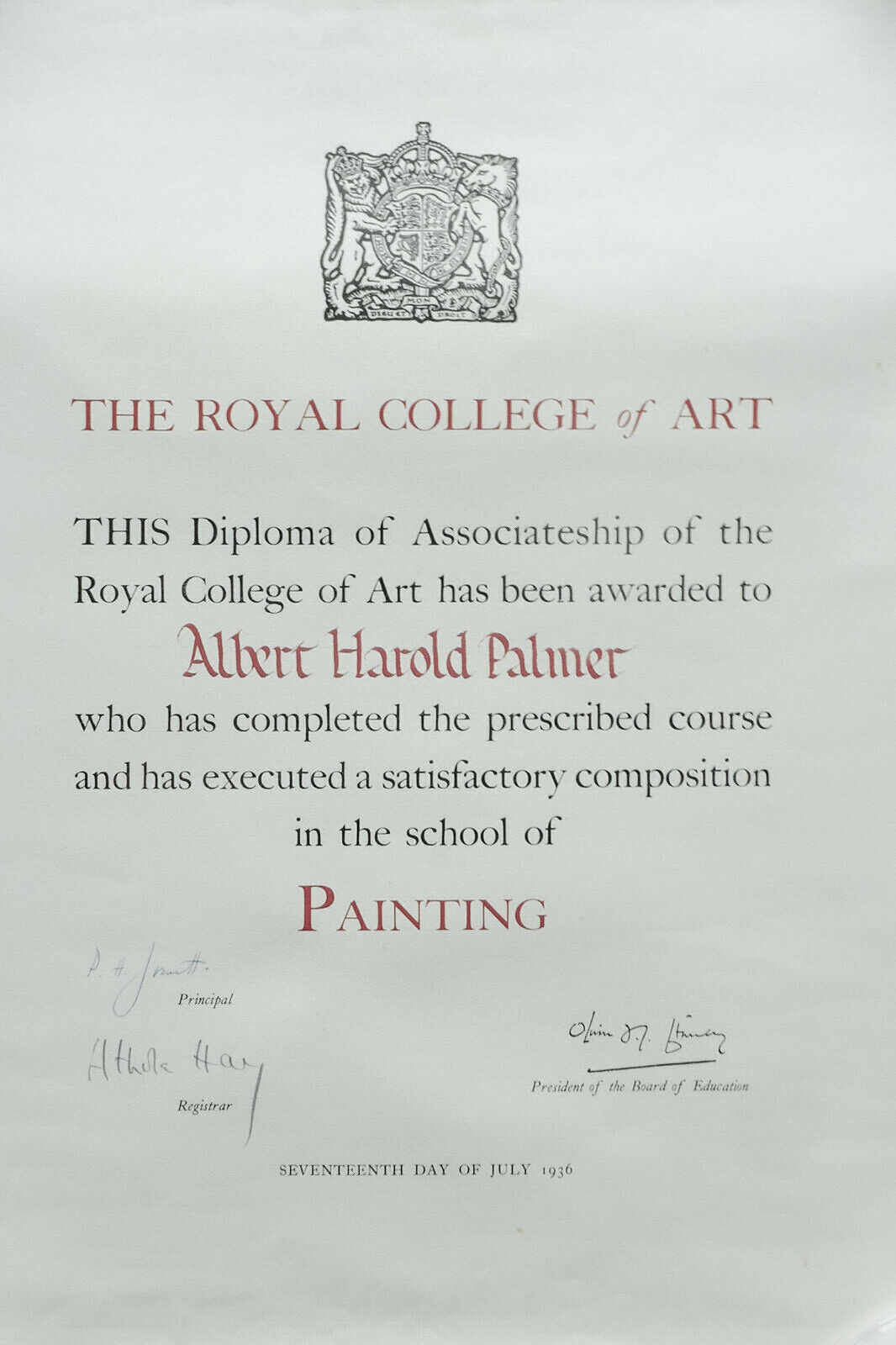
Exhibitions - FIGURES - HUMAN DEGRADED AND DIVINE
PosternGate Gallery, Hull 1990
Exhibition Rooms, Grimsby 1991
The notes ‘Exhibition of Work by Albert Palmer’ are part of an introduction written by the artist for the Gravesend Exhibition of 1973.
Regular contributor to the Royal Academy Summer Exhibition
1967 - Cachemar
1968 - Standing Figures
1969 - The Red Handcart
1976 - Into Dark Night
1978 - They Float Upwards
Albert Harold Palmer died in 1985, leaving 300 oil paintings, numerous drawings and watercolours.
Most of his work was painted or retouched in the last 10 years of his life.
Albert's paintings were stored in his gallery at Hanbury Street, London until the death of his daughter in 2020 who bequeathed them in her Will to the Royal Society of Arts.
Sadly, due to unforeseen circumstances the paintings were irreparably damaged. These paintings were never photographed.
The notes "Exhibition of Work by Albert Palmer" are part of an introduction written by the artist for the Gravesend Exhibition of 1973
I hope I may be permitted a few words about some of the ideas which have led up to the making of these paintings. A painting should, I believe, be based on a design with a strong geometrical feeling throughout. It should give a feeling of strangeness or mystery and contain an element of surprise or even audacity.
I believe that an artist has got to be original somewhere, in however small a degree. He must represent a personal vision and imply an attitude to life - I am stating here my ideals, not achievements. It is a very difficult thing to achieve - it takes some artists, even great ones, many years. In other words, they do not pick up a style in an art school and use it as an alibi or substitute for the necessary objective study of nature.
There are some pictures which are political in a very general sense and therefore have to face the charge by some 'purist' critics that art should not be involved. So far as I am concerned all is “grist to the artist’s mill”. These critics tell us that Titian went on painting beautiful nudes while thousands of prisoners rotted in the galleys of those days. True enough - but it must be remembered that galley slavery was an accepted form of punishment and used by the Inquisition and since the Catholic Church and its secular Princes were the patrons of the time, no artist going against them would have survived. Better, it seems, to paint erotic nudes for Philip II of Spain to arouse him, presumably, in the begetting of more young princes and princesses; thus we come back to politics! There is nothing wrong in painting nudes but that does not disqualify other themes - Titian also painted Christian themes, and what art could be more vividly didactic than Christian art - perhaps the greatest art ever produced.
By the 19th Century, things were different for Goya, Gericault and Delacroix, amongst others, who produced works based on contemporary events.
On this theme of mine, I found that the more conventional academic nude did not suit the subject as I saw it. I found that the treatment of the way the figures were painted should itself try to suggest the degradation and humiliation suffered. In his "Raft of the Medusa", Gericault has painted the nudes as though he were out to rival Michael Angelo, Raphael or Tintoretto nudes and it seems to me to appeal for admiration and in that way is a distraction from the very essence of the theme he is interpreting and militates against it.
These are well-nourished male studies made in the studio, whereas in the actual event some of the shipwrecked had gone mad from starvation; in the end they resorted to cannibalism. Gericault has chosen to depict the moment when the few survivors sighted land - it was at sundown, I believe, so there is a very dramatic lighting effect and an exuberant waving of tattered garments but the overall effect is of heroic Romanticism. In fact the emotional effect is reminiscent of Delacroix "Liberty Leading the People", when really the themes are a million miles apart. Now this is the very real effect of the age Gericault lived in; the intellectual and emotional atmosphere of mid-19th century Romanticism has made itself felt in the work - almost dictated it.
In spite of what I've said, it is a very great picture for in the end all art is a work of the imagination working through conventions and conventions are artificial and so art itself is artificial in a way that conveys a greater truth. Now today's conventions and today's intellectual and emotional climate would not accept that theme interpreted in that way. We cannot escape the influence of the period we live in - and we have seen Belsen. So I make no apologies for these pictures - only their inadequacies -believing with Hegel that "the goal of art is to aid in the comprehension of the world's ideas" and it is a very wide gamut of ideas.
Albert Palmer
